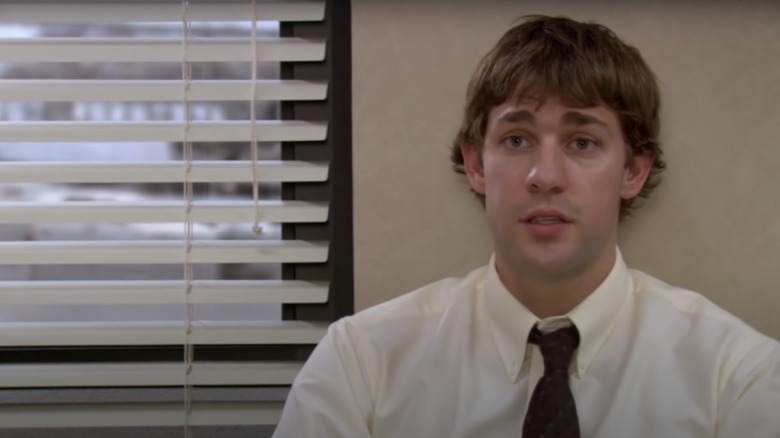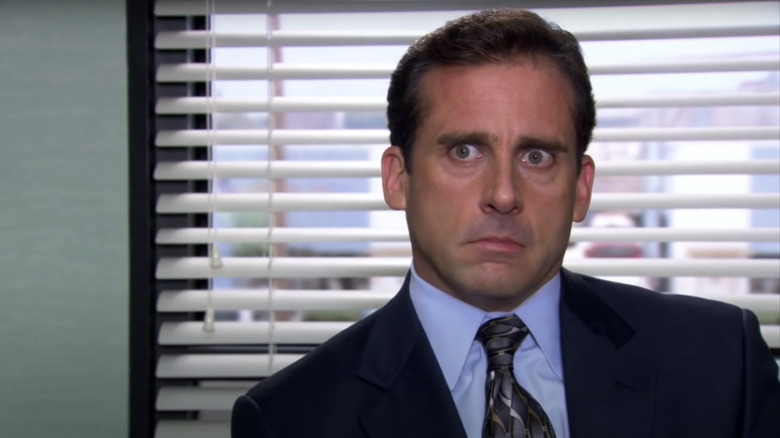The Office's Talking Head Scenes Were Hiding A Subtle Hint About Its Characters
With mockumentaries like "The Office," the viewer gets used to seeing talking heads against a variety of backgrounds. It gives the eye something different to look at so it's not just drinking in the same static scene each time. While the focus is on dialogue, and the offices of the Dunder Mifflin Paper Company are somewhat nondescript, the talking head scenes in "The Office" actually contain a hidden clue about the fate of each character.
Since 2019, Jenna Fischer and Angela Kinsey — who played Pam Beesly and Angela Martin on "The Office," respectively — have been going back through each episode of the show, offering their insights as cast members, on their "Office Ladies" podcast. Responding to a fan question in the episode on "Conflict Resolution," Fisher offered an interesting reveal about why John Krasinski's character, Jim Halpert, always seems to be sitting in front of a window to the outside world, whereas most other characters do their talking head scenes in the opposite direction, with the office bullpen behind them. Fisher said:
"I emailed ['The Office' showrunner] Greg Daniels and I asked him, was this deliberate? Was this an accident? What does he have to say? And he said that it was something that Randall Einhorn, our cinematographer, suggested to Greg, starting with the pilot. And Greg absolutely loved it. He said Randall's intention here was that it didn't necessarily have to be only Jim. But the idea was that any character that had a future outside of Dunder Mifflin or held some sort of internal optimism would sit in front of a window leading out into the world. But characters who didn't want to leave Dunder Mifflin or who maybe were in more of a position of being trapped, would do their talking heads facing into the office."
'Branch Closing' gives everyone a temporary window
The discussion of how the talking head scenes were framed came up again on a later episode of the "Office Ladies" podcast devoted to "Branch Closing." Fisher reiterated that scenes filmed with the office in the background meant characters "didn't really have a future. They were kind of stuck in the world of Dunder Mifflin." Jim, on the other hand, with his persistent window backdrop, "had a future outside of this company" and "was going places."
"Branch Closing," however, put all of the characters in a position where it seemed they were about to lose their jobs. It forced them to seriously consider, for the first time maybe, a life beyond the office, as they might have no other choice but to find work elsewhere. As Fisher put it:
"In this episode, after the employees get the news that Dunder Mifflin Scranton is closing, every single one of the talking heads have a window to the outside world behind them. ... When they find out that the branch isn't closing, all of the talking heads switch back to having the bullpen behind them."
"The Office" has continued to enjoy popularity via streaming long after its series finale aired on NBC, and maybe part of the enduring appeal of the sitcom — beyond the requisite laughs — is that many at-home viewers can relate, on a subconscious level, to the feeling of being trapped in their job or some other set of life circumstances. So many of the characters in "The Office" are just trying to get by and make the best of their situation, but if Jim has a bright future beyond his current job (with Pam, who he would eventually marry), it inspires hope the audience might find that in their own life, too.

